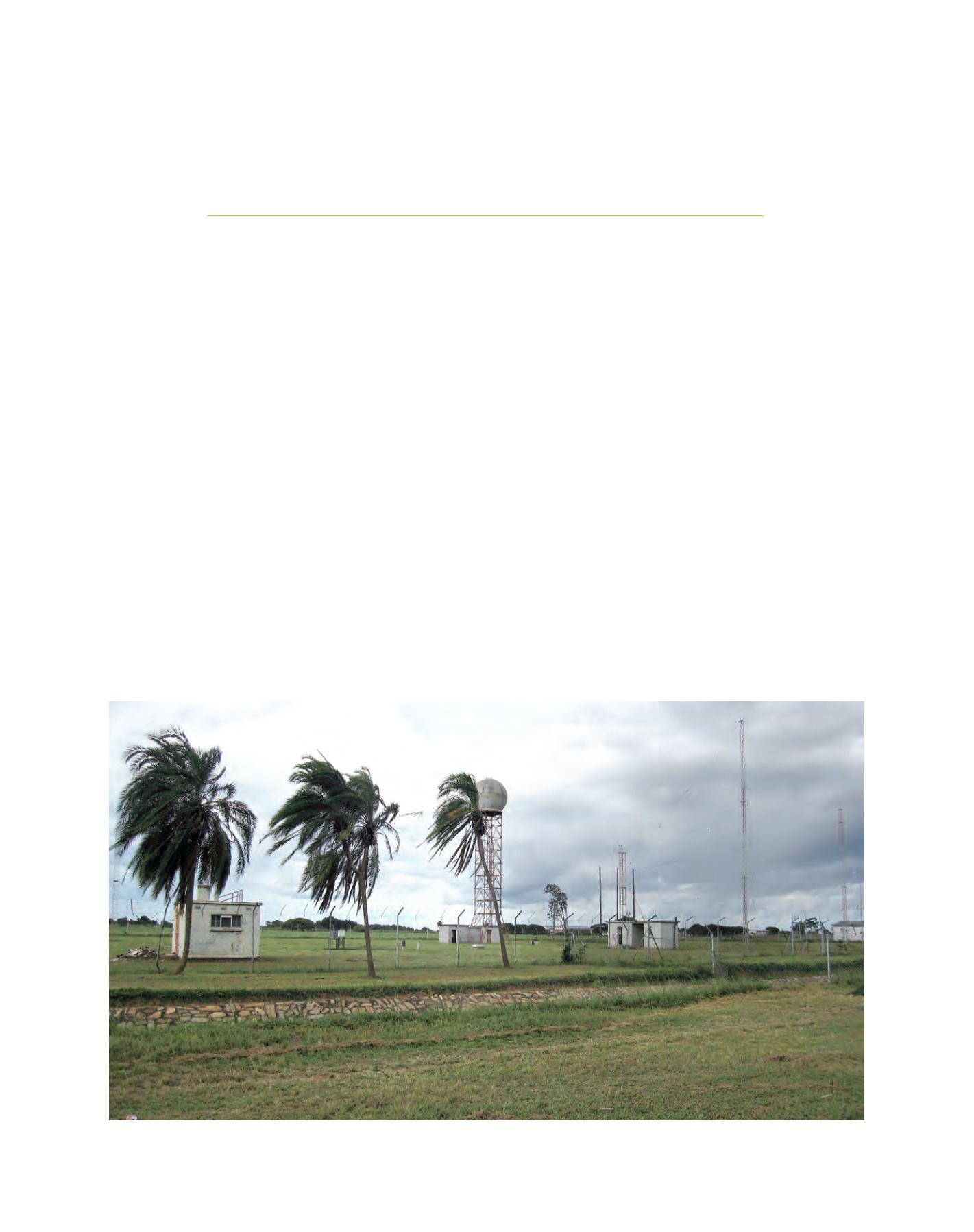

G
overnance
and
P
olicy
[
] 80
Danish alliances with the developing world
on climate change and adaptation
Dr Wilhelm May, Senior Scientist, Danish Meteorological Institute
T
he Danish Ministry of Climate and Energy was estab-
lished in 2007 as a part of the government’s increased
efforts to promote a greener and more sustainable society.
One of its main tasks is the preparation of the United Nations
COP15 climate conference in Copenhagen in December 2009.
The ministry consists of several agencies conducting climate
research projects in developing countries in close partnership
with both Danish and local agencies in the target nations. The
following examples are centred around the experiences of the
Danish Meteorological Institute (DMI).
From 2009 to 2012, DMI will collaborate with the Sokone University
of Agriculture in Tanzania and the Tanzania Meteorological Agency
in a research project on the availability of water resources for agri-
culture under future climate conditions in northern Tanzania. The
aim of connecting these three institutions is to give Tanzania the
ability to prepare for future climate change.
During the same period DMI will be part of a ‘twinning-project’
with the Zambia Meteorological Department (ZMD). The aim of
this project, which has been initiated by the Royal
Danish Embassy in Lusaka, is to improve ZMD’s capac-
ity in climate monitoring and modelling as well as in
the dissemination of weather and climate products.
As a result, ZMD will be better prepared for providing
weather and climate-related information and services
to the public, as well as to various stakeholders, both
governmental and private.
In particular, ZMD will be better qualified to
provide important information and advice to
governmental bodies on the issue of climate change
in Zambia. It is envisaged, for example, that ZMD
will be more able to provide detailed data on both
present-day Zambian climate variability and future
climate conditions, which is the basis for the National
Adaptation Programme of Action on Climate Change
(NAPA), formulated by the Ministry of Tourism,
Environment and Natural Resources. Moreover,
it is envisaged that ZMD will be better positioned
Meteorological station, Lusaka International Airport, Zambia
Image: John Cappelen
















